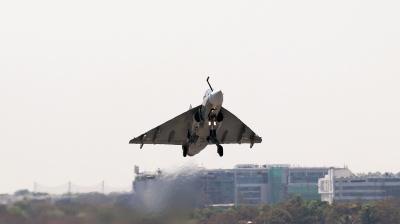NASA spacecraft hurtles toward the sun
The Parker Solar Probe will fly straight through the wispy edges of the sun’s corona.
Embarking on a mission that scientists have been dreaming of since the Sputnik era, a NASA spacecraft hurtled Sunday toward the sun on a quest to unlock some of its mysteries by getting closer than any object sent before.
If all goes well, the Parker Solar Probe will fly straight through the wispy edges of the sun’s corona, or outer atmosphere, in November. In the years ahead, it will gradually get within 3.8 million miles (6 million kilometres) of the surface, its instruments protected from the extreme heat and radiation by a revolutionary new carbon heat shield and other high-tech wizardry.
Altogether, the Parker probe will make 24 close approaches to our star during the seven-year, $1.5 billion journeys.
“Wow, here we go. We’re in for some learning over the next several years,” said Eugene Parker, the 91-year-old astrophysicist for whom the spacecraft is named.
It was Parker who accurately theorized 60 years ago the existence of solar wind — the supersonic stream of charged particles blasting off the sun and coursing through space, sometimes wreaking havoc on electrical systems on Earth.
This is the first time NASA has named a spacecraft after a living person.
As Parker and thousands of others watched, a Delta IV Heavy rocket carried the probe aloft, thundering into the clear, star-studded sky on three pillars of fire that lit up the middle-of-the-night darkness.
NASA needed the mighty 23-story rocket, plus a third stage, to get the Parker probe — the size of a small car and well under a ton — racing toward the sun, 93 million miles (150 million kilometres) from Earth.
A Saturday morning launch attempt was foiled by last-minute technical trouble. But Sunday gave way to complete success.
It was the first rocket launch ever witnessed by Parker, a retired University of Chicago professor. He said it was like looking at photos of the Taj Mahal for years and then beholding the real thing in India.
“I really have to turn from biting my nails in getting it launched, to thinking about all the interesting things which I don’t know yet and which will be made clear, I assume, over the next five or six or seven years,” Parker said on NASA TV.
Among the mysteries scientists hope to solve: Why is the corona hundreds of times hotter than the surface, which is 10,000 degrees Fahrenheit (5,500 degrees Celsius)? And why is the sun’s atmosphere continually expanding and accelerating, as Parker theorized in 1958?


















